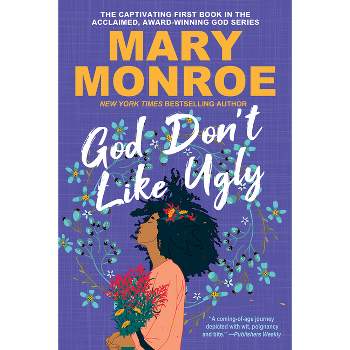Sponsored
Liminal Whiteness in Early Us Fiction - (Interventions in Nineteenth-Century American Literature and Culture) by Hannah Lauren Murray (Paperback)

About this item
Highlights
- Hannah Lauren Murray shows that early US authors repeatedly imagined lost, challenged and negated White racial identity in the new nation.
- About the Author: Hannah Lauren Murray is Lecturer in American Literature at the University of Liverpool.
- 216 Pages
- Literary Criticism, American
- Series Name: Interventions in Nineteenth-Century American Literature and Culture
Description
About the Book
Hannah Lauren Murray shows that early US authors repeatedly imagined lost, challenged and negated White racial identity in the new nation.
Book Synopsis
Hannah Lauren Murray shows that early US authors repeatedly imagined lost, challenged and negated White racial identity in the new nation. In a Critical Whiteness reading of canonical and lesser-known texts from Charles Brockden Brown to Frank J. Webb, Murray argues that White characters on the border between life and death were liminal presences that disturbed prescriptions of racial belonging in the early US. Fears of losing Whiteness were routinely channelled through the language of liminality, in a precursor to today's White anxieties of marginalisation and minoritisation.
From the Back Cover
'As scholars of American literature and history know, White dread has been a haunting presence for a long, long time. Anxious fantasies of replacement, subsumption, diminution: in Liminal Whiteness, Hannah Murray raises these spirits, and gets them to speak in new tongues. Across agile readings of figures from Brocken Brown, Poe, and Melville to Robert Montgomery Bird and Frank Webb, Liminal Whiteness vivifies a rich literary counter-history and gives us new purchase on the shifting terrain of reactive White fantasy.' Peter Coviello, University of Illinois Chicago An in-depth examination of liminality and race in early US fiction Hannah Lauren Murray shows that early US authors repeatedly imagined lost, challenged and negated White racial identity in the new nation. In a Critical Whiteness reading of canonical and lesser-known texts from Charles Brockden Brown to Frank J. Webb, Murray argues that White characters on the border between life and death were liminal presences that disturbed prescriptions of racial belonging in the early US. Fears of losing Whiteness were routinely channelled through the language of liminality, in a precursor to today's White anxieties of marginalisation and minoritisation. Hannah Lauren Murray is Lecturer in American Literature at the University of Liverpool. Cover image: The Library Company of Philadelphia Cover design: [EUP logo] edinburghuniversitypress.com ISBN BarcodeReview Quotes
As scholars of American literature and history know, White dread has been a haunting presence for a long, long time. Anxious fantasies of replacement, subsumption, diminution: in Liminal Whiteness, Hannah Murray raises these spirits, and gets them to speak in new tongues. Across agile readings of figures from Brockden Brown, Poe and Melville to Robert Montgomery Bird and Frank Webb, Liminal Whiteness vivifies a rich literary counter-history and gives us new purchase on the shifting terrain of reactive White fantasy.--Peter Coviello, University of Illinois Chicago
In a quick coda, Murry powerfully connects the dots to the United States today, showing how fears of white marginality continue fueling the powerfully exclusionary logics of whiteness. This is a book that is generous to its predecessors across an array of fields, and that gives new liveliness and relevance to familiar debates about the destructive innovation of white citizenship in the newly United States.--Dana D. Nelson, Vanderbilt University "Early American Literature"
About the Author
Hannah Lauren Murray is Lecturer in American Literature at the University of Liverpool. Her research centres on race and citizenship in nineteenth-century American literature, with a specific focus on speculative genres. She has previously published in The Eighteenth Century: Theory and Interpretation (2020), The Oxford Handbook of Charles Brockden Brown (Oxford UP, 2019) and the Irish Journal of Gothic and Horror Studies (2017) and she sits on the steering committee for the British Association of Nineteenth-Century Americanists (BrANCA).











